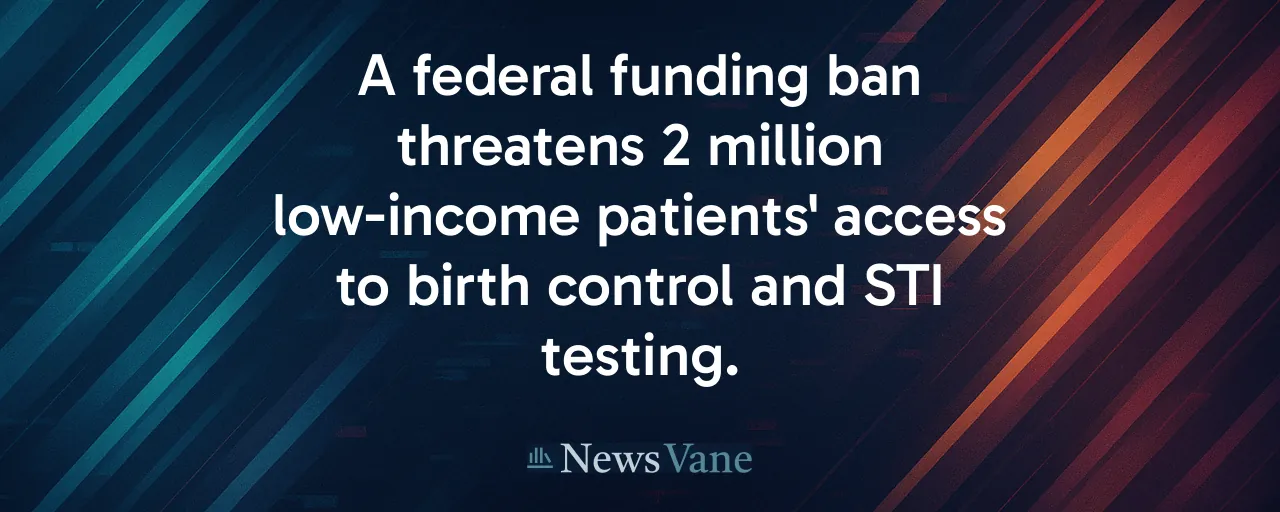A Sudden Blow to Health Care Access
On July 7, 2025, Planned Parenthood launched a federal lawsuit against the Trump administration, challenging a new funding ban embedded in a massive tax-and-spending bill. The provision, signed into law hours earlier, aims to strip the organization of roughly $560 million in Medicaid and Title X reimbursements for one year. This move threatens services like birth control, cancer screenings, and STI testing for over 2 million low-income patients across 600 clinics nationwide.
The lawsuit arrives on the heels of a Supreme Court decision allowing states to exclude Planned Parenthood from Medicaid. Together, these actions signal a bold push to reshape federal health care funding, raising the broader question of how the nation can ensure access to essential health services for vulnerable populations while navigating deeply divisive policy disputes.
Why the Funding Matters
Planned Parenthood's Medicaid grants account for about 35 percent of its revenue, supporting preventive care for low-income women, LGBTQ individuals, and teens.
Title X funds, though smaller at $20 million, provide critical contraception and screenings for 1.5 million uninsured clients. Only 15 percent of its affiliates offer surgical abortions, which federal dollars cannot cover due to longstanding restrictions.
Cutting these funds could disrupt care for millions. Research from states like Texas and Wisconsin shows that when Planned Parenthood clinics close, teen birth rates and STI infections rise. The Congressional Budget Office estimates defunding could add $130 million in Medicaid childbirth costs in just one year, as reduced contraception access leads to more unplanned pregnancies.
The Bigger Picture: Costs and Consequences
The economic stakes are steep. Experts project that every dollar cut from contraception programs increases public spending on births by $1.80 within two years. Over five years, the $560 million in federal savings from defunding could be offset by up to $700 million in new Medicaid and welfare costs. Beyond dollars, clinic closures may lead to job losses for 8,000 employees and strain community health centers, which face their own $4 billion funding shortfall.
Social impacts are equally concerning. Reduced access to contraception could raise unplanned pregnancy rates by 15 percent in affected areas, with Black, Hispanic, and rural communities hit hardest. Declines in STI testing may also drive higher transmission rates, compounding public health challenges.
Voices on Both Sides
Advocates for defunding, including groups like Susan B. Anthony Pro-Life America, argue that federal dollars are inappropriate for supporting an organization tied to abortion, even indirectly. They point to community health centers as viable alternatives and cite studies showing clinic closures can lower abortion rates. Transparency concerns also fuel their case, as some question Planned Parenthood's financial practices.
On the other hand, supporters of Planned Parenthood, such as the ACLU and medical groups like the American Medical Association, warn that defunding would gut essential services unrelated to abortion. They argue that alternative clinics often lack the capacity or specialization to absorb displaced patients, especially in rural areas, and stress that 96 percent of Planned Parenthood's visits focus on preventive care.
Learning From the Past
The current clash over Planned Parenthood's funding is part of a long history. The 1976 Hyde Amendment set the stage by barring federal dollars for abortions, followed by battles in 2011, 2015, and 2019. Each time, defunding efforts sparked lawsuits and public debate, with mixed outcomes. The 2019 Title X restrictions, for example, led to 1 million fewer low-cost contraception clients before being reversed in 2021.
History shows that abrupt funding cuts often create gaps in care that other providers struggle to fill. Studies across nine states reveal that community health centers frequently lack the staff or expertise to handle displaced contraceptive demand, particularly in underserved areas.
A Path to Balance
Finding common ground is possible. Congress has the option to preserve funding for Planned Parenthood affiliates that are fully separate from abortion services, addressing transparency concerns with mandatory audits. Expanding grants to community health centers before any funding shift helps build capacity and minimizes disruption. A federal voucher program for preventive care also empowers patients to choose their providers.
These steps prioritize continuity of care while tackling legitimate concerns about accountability and federal spending. Health economists agree that gradual transitions, paired with investments in maternal health, could reduce costs and improve outcomes for all.
What's Next for Patients and Policy
The road ahead is uncertain. The Department of Health and Human Services is required to issue regulations within 60 days, while states adjust their Medicaid networks. Planned Parenthood's lawsuit may secure a temporary injunction, but a prolonged legal battle is likely, potentially reaching the Supreme Court. For now, patients face confusion and clinics grapple with cash-flow gaps.
The debate over Planned Parenthood's funding represents a significant test of how the nation balances competing priorities, extending beyond a mere policy skirmish. Access to care, fiscal responsibility, and ethical concerns all demand attention. Solutions that bridge these divides can protect vulnerable populations while fostering trust in public health systems.
As the lawsuits unfold, one thing is clear: the health of millions hangs in the balance. Policymakers, providers, and communities are urged to work together to ensure that essential services remain within reach, no matter the outcome in Washington.
